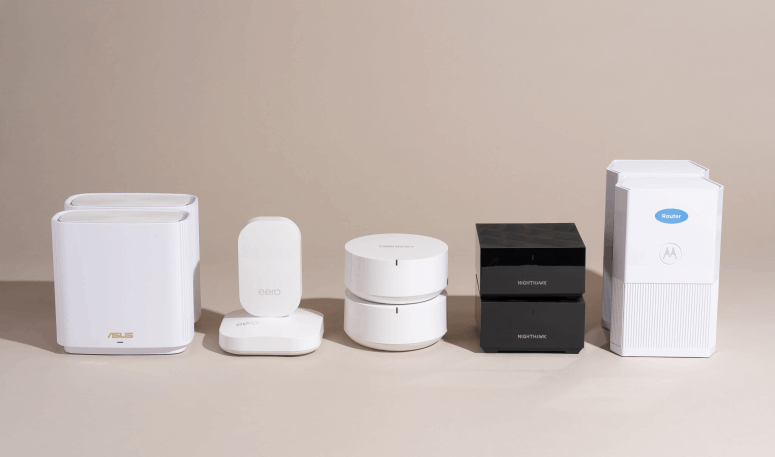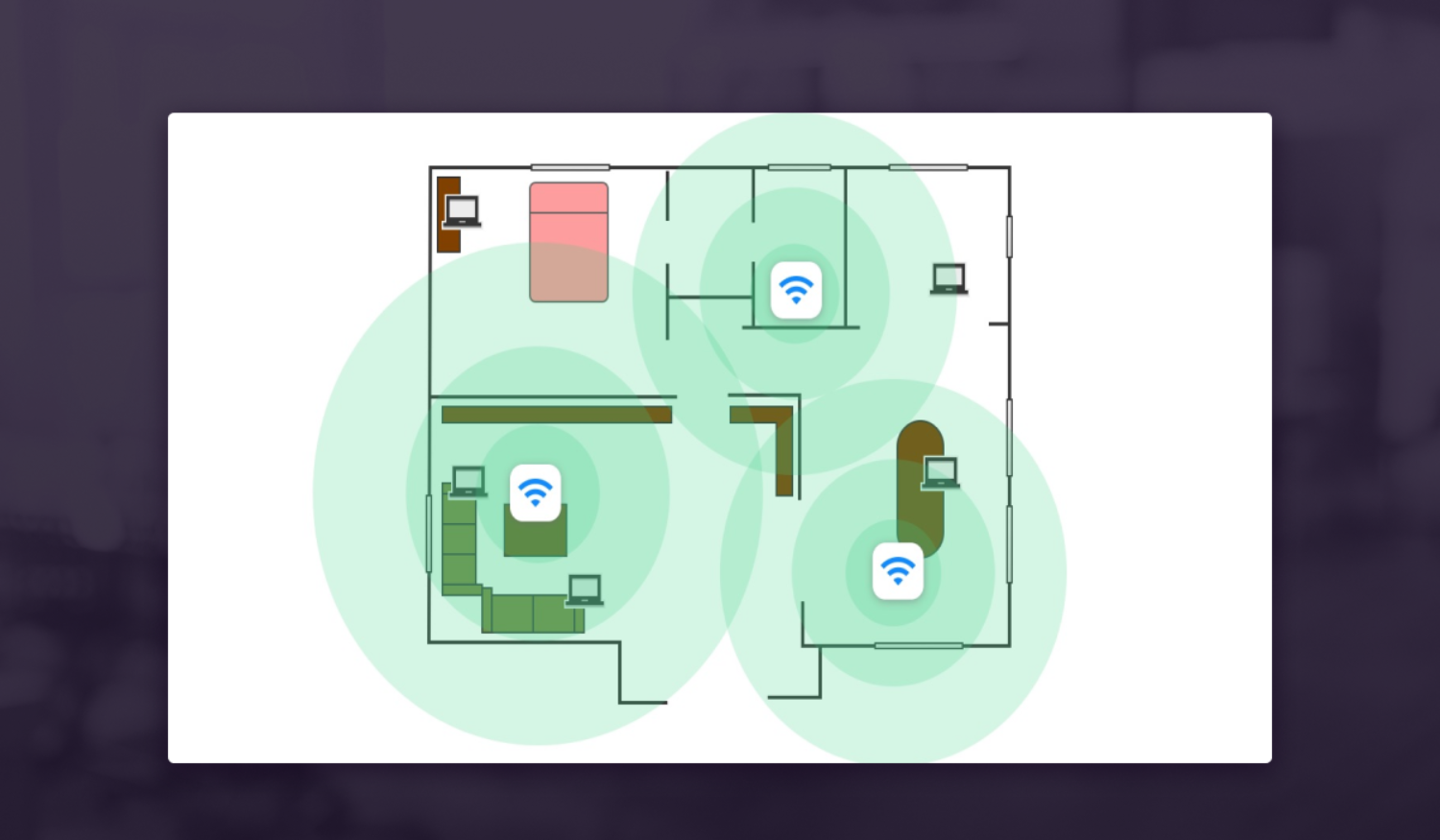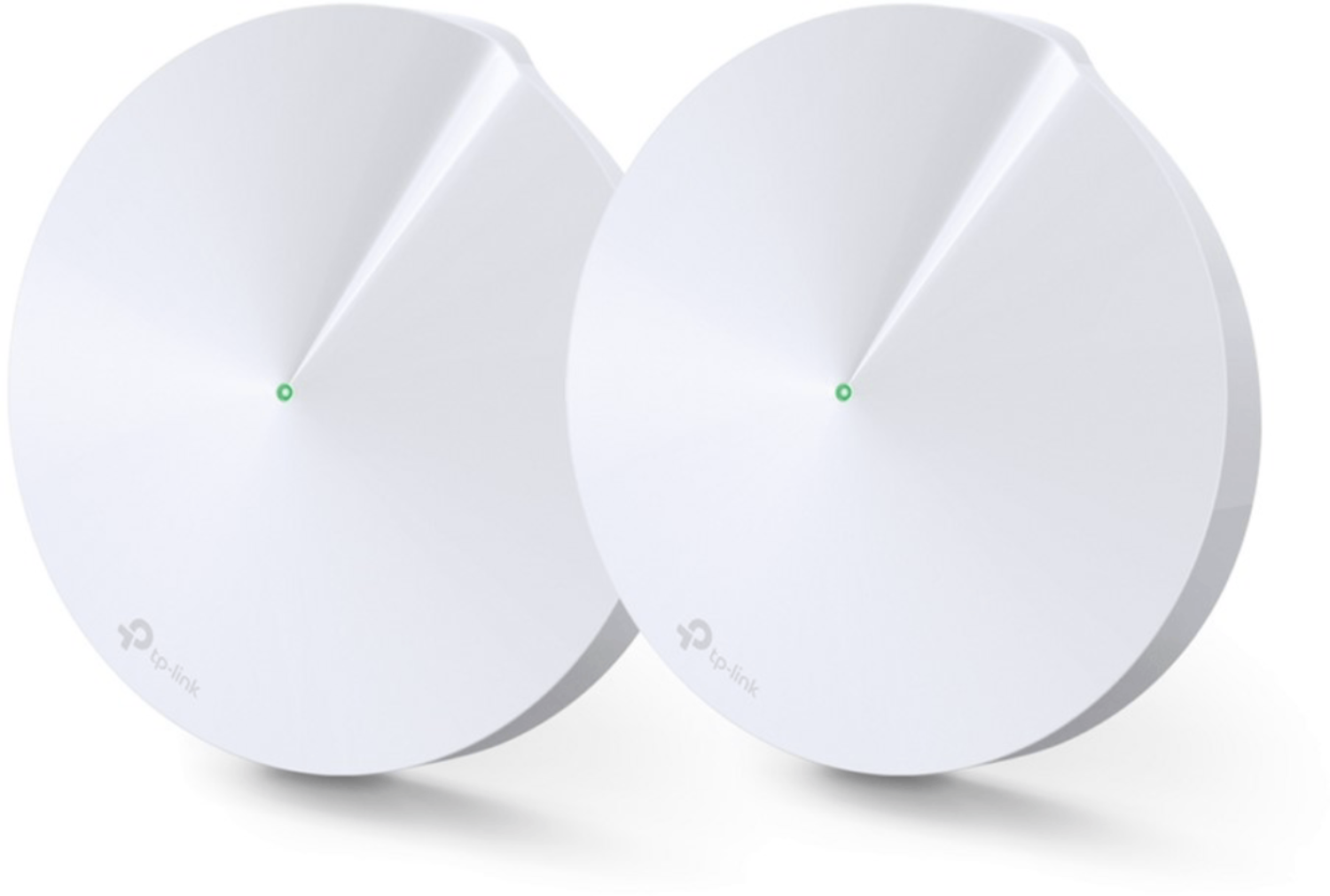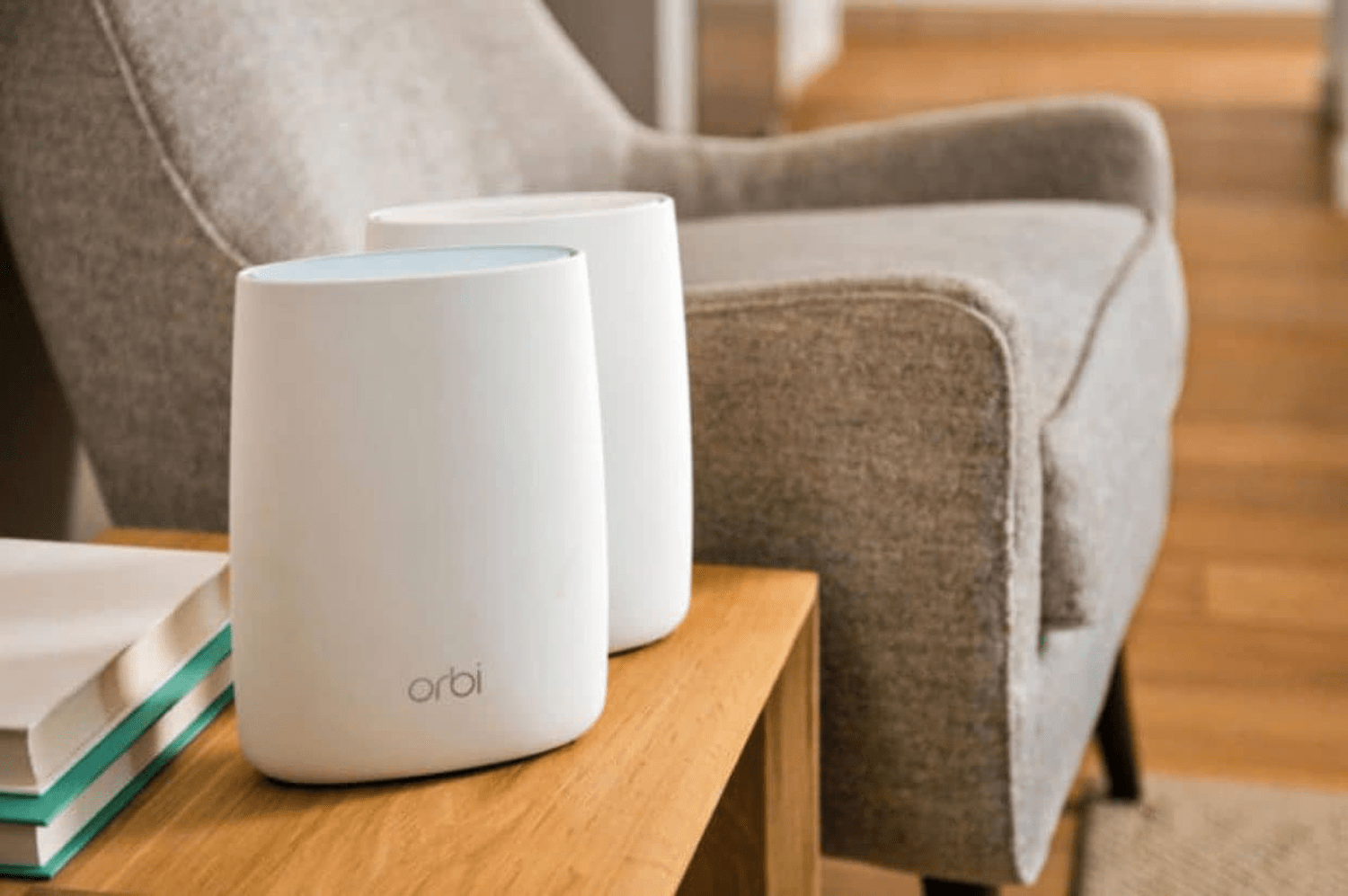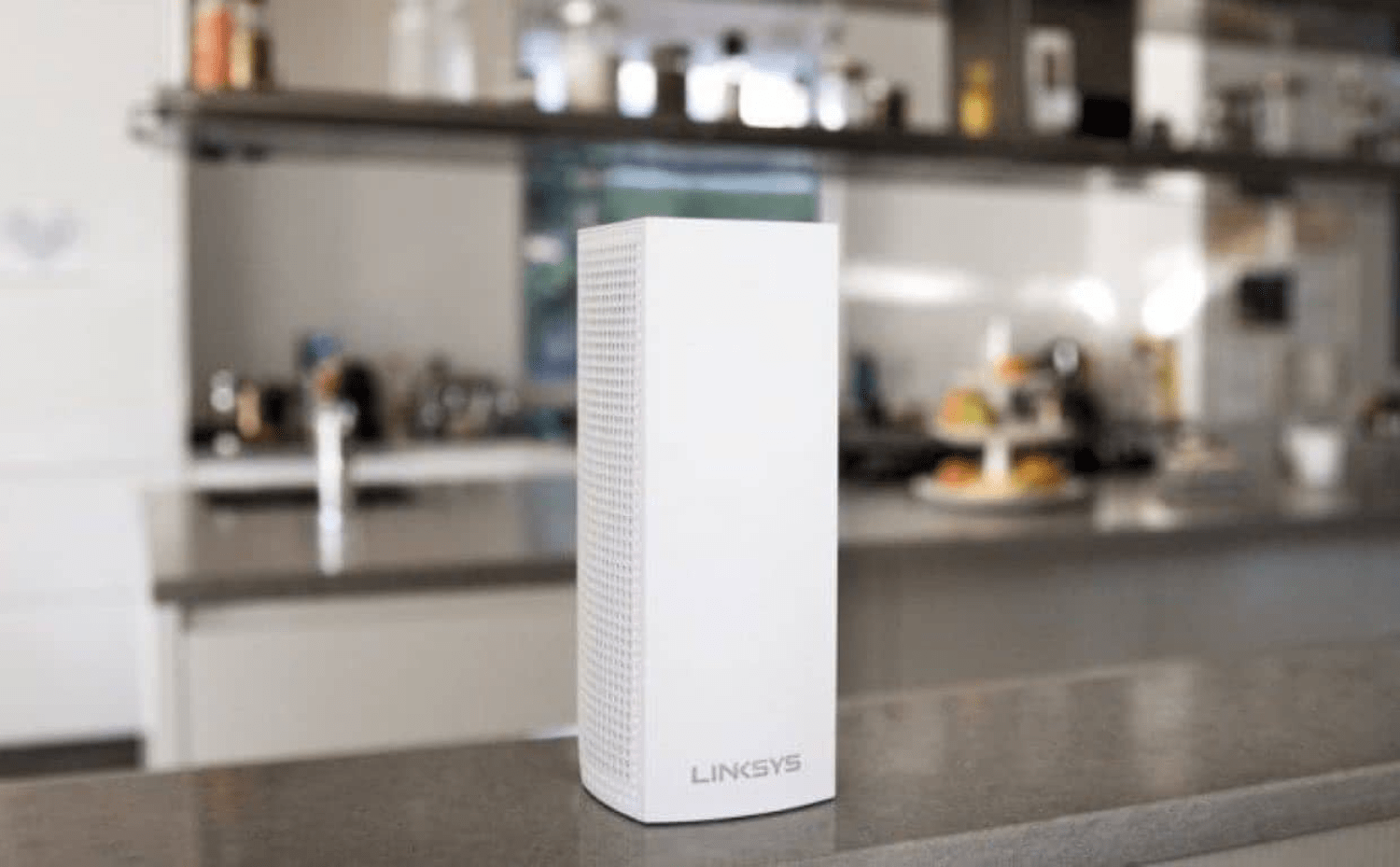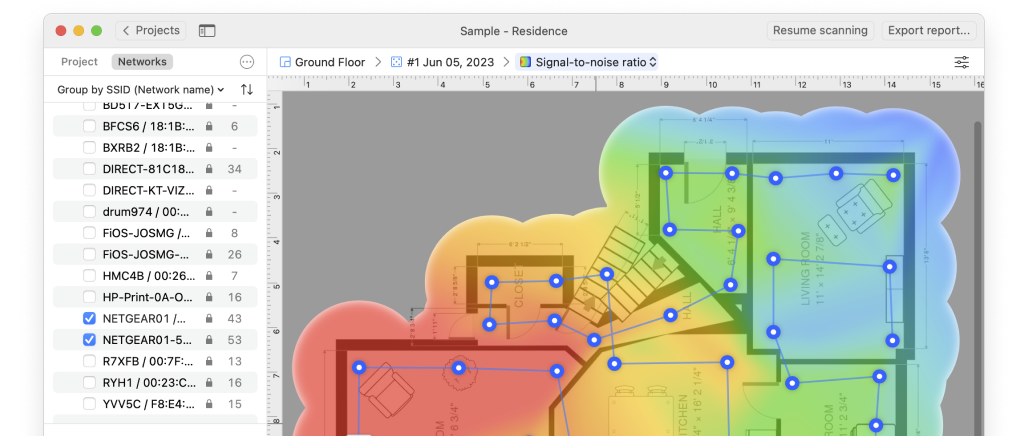Designed for homes and office buildings up to 6,500 square feet, the TP-Link Deco M9 Plus is an advanced tri-band mesh WiFi system that can do almost everything you could possibly want it to do. It sells in a pack of three units. When connected, the three units broadcast a single 802.11ac WiFi network over one 2.4 GHz band and two 5 GHz bands, ensuring smooth internet access and wireless speeds of more than 1,000 Mbps no matter how many devices you have.
In addition to being the best mesh WiFi system in 2022, the TP-Link Deco M9 Plus is also a smart hub capable of interacting with Zigbee, Bluetooth, and WiFi devices from leading brands such as GE, Kwikset, Samsung, or Securifi.
The initial configuration of the TP-Link Deco M9 Plus is done using the Deco smartphone app. The app provides step-by-step instructions to guide you through the process and help you get your network up and running in minutes. The app is also used to block inappropriate online content, prioritize devices and applications, and protect connected devices from online threats.
